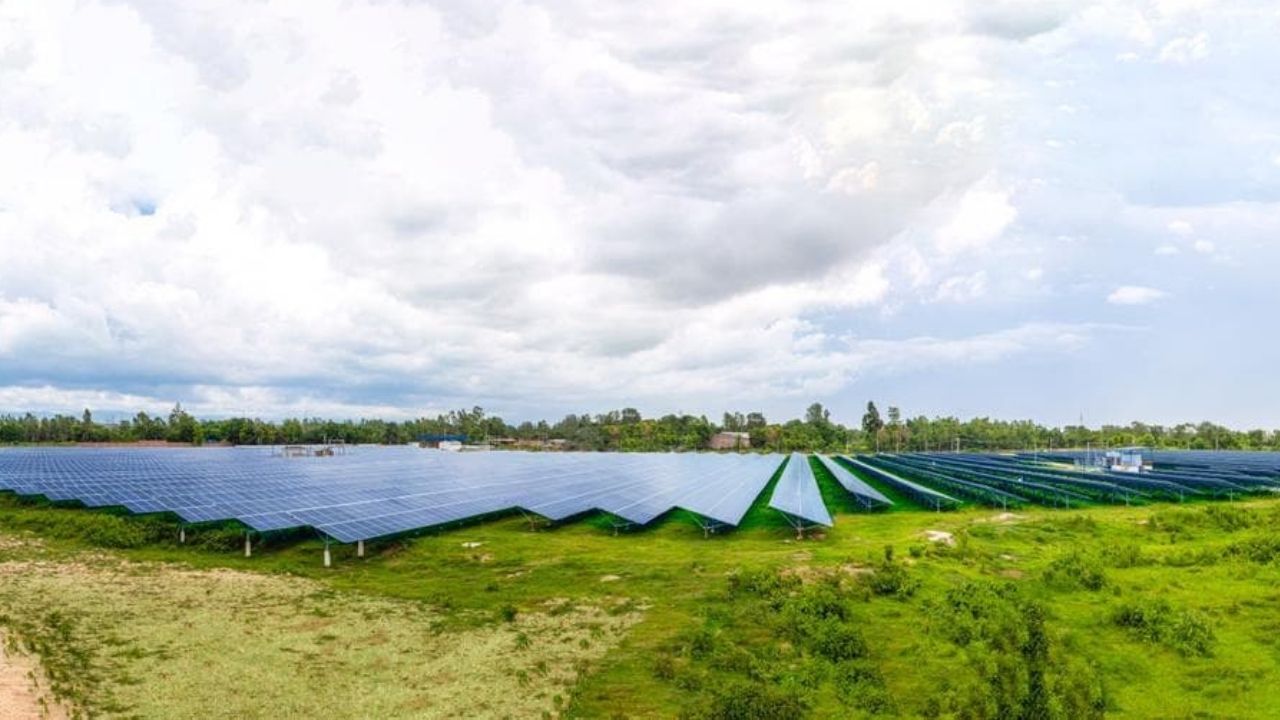Energy Update
Turning Nepal’s solar game around

Until 2016, Nepal suffered from chronic power shortages. At that time, just 65% of the country’s population had access to electricity. Assessing the situation, the International Renewable Energy Agency (IRENA) estimated that the country has the potential for 2.1 GW of installed PV capacity. Although the Nepal Electricity Authority (NEA) has officially been able to buy solar power under long-term PPAs since July 2014, the majority of projects granted these contracts have been large-scale hydropower plants. Following the slow activity, plans are finally afoot, however, to boost the country’s solar footprint.
Nepal is a mountainous landlocked country situated between India and China. It comprises over 6,000 rivers featuring rivulets and tributaries totaling 45,000 km in length.

Rich in renewable water resources, the Asian Development Bank (ADB) estimates the country has the potential to produce 83,000 MW of electricity, of which around 43,000 MW are thought to be economically viable.
Despite its enormous hydroelectric potential and absence of fossil fuel reserves, it was not until recently that Nepal began focusing on hydroelectric power. This development has come with problems, however. In particular, there is a deficiency of electricity generation in the dry season when demand rises, and water flow diminishes.

Though the installed electricity generation capacity of Nepal has grown steadily, peak demand has also increased at a higher rate and as per the data for 2016, energy imports from India doubled for an average annual growth rate of 20.4%, compared with a 0.3% annual increase in Nepal Electricity Authority (NEA) generation.
Owing to this situation, in 2016, Kulman Ghising, Managing Director of the NEA, took steps to increase domestic generation, reduce system losses and increase cross-border transmission capacity for electricity imports from India, and gradually decrease the load shedding hours.
Hence, load shedding (Nepal faced 16 hours of load shedding between 2008-2016) has been officially eliminated since May 13, 2018. This was possible due to imports totaling around 145 MW of power from India via the Dhalkebar – Mujaharpur Transmission line in FY 2018/19. The eradication of load shedding also prompted a reform to Nepal’s energy sector.
Understanding the energy mix and its long-term implications for Nepal’s energy sector, Ghising re-initiated the World Bank’s Grid Solar and Energy Efficiency Project agreed between the World Bank and the NEA in 2014.
The NEA also signed power purchase agreements (PPAs) with the private sector for the purchase of solar energy and national grid connection. Moreover, in December 2016, ADB announced a US$20 million grant to promote private sector investment in utility-scale solar power. This funding was to ensure the installation of at least 25 MW of solar capacity by 2018 and was to be provided to the private sector as viability gap funding.
Though there were a few bidders interested in developing the solar projects, to date none have been realized. This is because financial institutions and banks remain unconvinced of the financial viability of solar projects, despite the government’s promotion of alternative energy sources for electricity.
In FY2019/20, the total energy imported from India decreased by 38.55% compared to FY2018/19. Despite this, the total available energy in the system increased by 2.51% to 7,741 GWh in FY2019/20 over the corresponding figure of 7,551 GWh in FY 2018/19. Out of total available energy, total domestic generation is 77.67%, while imported electricity from India accounted for 22.33%.
In order to be self-dependent, as well as stimulate the market for energy exports to neighboring nations, the NEA under the leadership of MD Kulman Ghising decided to install solar projects that would meet the energy demand in dry seasons. Thus, the first stage of the 25 MW solar project – 1.5 MW – was constructed and connected to the hydro-dominated national grid in June 2020. This was an NEA solar project constructed through the World Bank’s Grid Solar and Energy Efficiency Project.
Nepal’s solar energy sector transition came in 2019/20 when the Prime Commercial Bank approved financing for the 10 MW Mithila Solar PV Project by Eco Power Development Pvt. Ltd. However, despite the financial closure, in the absence of a proper EPC partner and understanding of the technology, Eco Power Development did not install the project.
An EPC agreement was eventually signed in 2020 with Sandeep Agrawal, managing director of Kushal Projects Nepal Pvt. Ltd who convinced Eco Power of his experience in the field of solar.
In February 2020, after all, required documentation was secured, the bank loan was paid in March 2020, and in April, a Letter of Credit (LC) for the products was opened. To initiate the project, a team comprising engineers and other trained manpower was recruited from India. It reached the site on June 29, 2020.
Various challenges were faced, such as the Covid-19 pandemic and unpredicted heavy rainfall. Thus, governmental officials were not convinced that the project could be implemented quickly, which led to regular monitoring for quality assurance. Finally, the project was completed within a period of seven months and on February 16, 2021, was connected to the national grid at Dhalkebar.
The average generation of the solar plant is more than 50,000 units per day. This has proved that such projects can generate electricity and can be a potential alternative source for energy generation for Nepal. The local population also benefitted as they can generate revenue against the land lease and undertake employment opportunities in the project. The successful installation of the project has been a particular achievement because it feeds into the same grid as the electricity imported from India. Thus, the government has decided that Nepal will import 10 MW less from India.
Overall, Nepal is starting to see growth in the development of solar and there are around 300 MW of projects in the pipeline at present.
Conversation
- Info. Dept. Reg. No. : 254/073/74
- Telephone : +977-1-5321303
- Email : [email protected]













